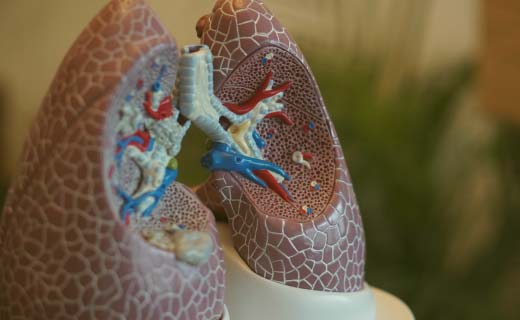Health

Viruses interactions in wet atm
by the Self-Assembly group
The transmission of influenza viruses, via aerosols or via droplets, is tightly linked to air temperature and humidity. Hydration of virus particles at the nanoscale is key to develop new preventive strategies or tools. We developed a range of model systems, on scales from mm to nm, including also the "spike" glycoproteins on the viral surface. The combination of scanning probe techniques, electron microscopy in water vapour, and fluorescence techniques provides new information on dry and wet nanosurfaces, which emulate the real influenza surface. A key result is the preservation of hydration layers at low humidity, a typical winter condition. We are interested in engagement with Public Health, e.g. for designing new policies and making society more resilient. We also welcome private investment or industrial collaboration on new tools for the prevention of virus transmission.
Scaffolding for biotechnology
by the Self-Assembly group
Using our cutting edge Novaspider technology (http://novaspider.com) we can produce biocompatible, bioabsorbable and conductive structures that guide and stimulate the growth of bone, muscle and neural tissue among others. The Novaspider technology allows to fabricate advanced fibrous materials combining solution and melt-electrospinning with industrial 3D printing.
Cryo FIB characterization of samples
by the Electron-Microscopy laboratory
The equipment will be a state-of-the-art focused ion beam electron microscope, which will combine features that are not normally present together in a single instrument: an extensive set of detectors for materials science applications; the large volume removal option targeting for batteries sector and industry; and a cryo option, typically dedicated to biological applications. This combination of features in a single instrument will be unique in Europe and will also provide new research opportunities in materials science related to low-temperature physics and in biological sciences related to cryo-cell tomography. This instrument will be the base for a common research facility, unique in Spain and one of a few in Europe.cryo-FIB preparation for cellular cryo tomography. With the acquisition of a new microscope, nanoGUNE´s Electron-Microscopy laboratory will be upgraded with the Bio Safety Level 2 laboratory, opening the opportunity to work with biological infected materials targeting for bio-medical research and hospital diagnostics.
Related news: CIC nanoGUNE to expand its Electron-Microscopy facility with a unique FIB Instrument
Alzheimer´s monitorization, Respiratory diseases monitorization and, Renal and lung cancer monitorization
The combination of 2 or more vibrational spectroscopy methods, as Raman FTIR or SERS, delivers complementary information of the samples under test. Combining respective data by artificial intelligence, increases the information volume and diagnostic value. The technology is very appropriate for in vitro diagnostics of a number of diseases, where metabolic changes can be observed. In a first study, we see that we can clearly distinguish Alzheimer’s patients from healthy control group. In further studies we are aiming at the detection and classification of specific tumors and infectious diseases. The technology has the potential to be expanded to a large number of systemic diseases, where metabolomic changes are indicative.
We are interested in private investment or industrial collaboration, supporting our R&D activities from early stage.
